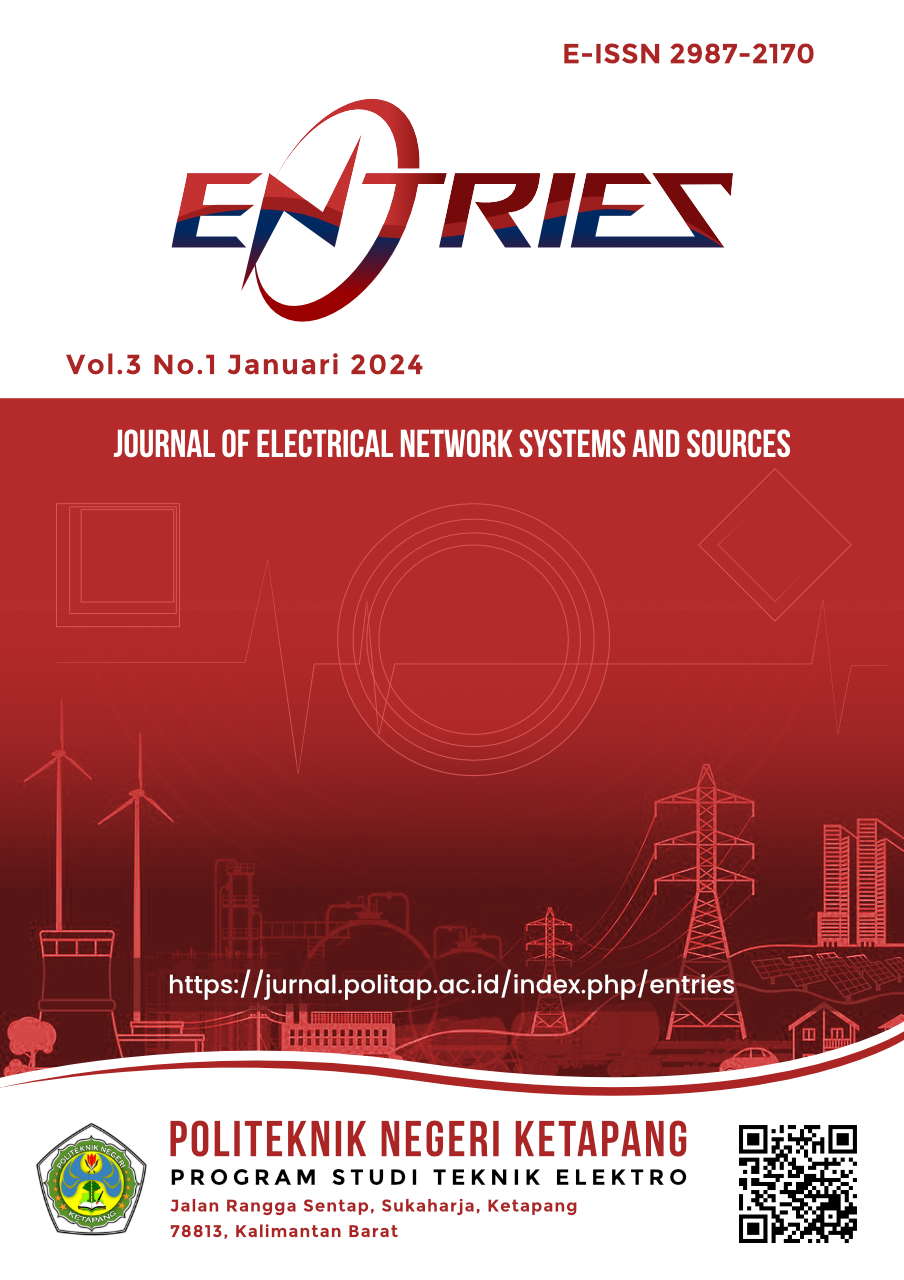Indonesia
 https://doi.org/10.58466/entries.v3i1.1581
https://doi.org/10.58466/entries.v3i1.1581
Abstract
Trainers or learning media are a means to demonstrate an experiment in practical courses, especially about basic electrical installations. Carrying out the assembly or installation of electrical installations aims to make it easier for students to understand electrical installation circuits and therefore a trainer or learning media is needed for electrical installation courses where there is no Electrical Installation Trainer at the Ketapang State Polytechnic Electrical Technology Workshop.
In the process of designing a trainer for a series of electrical installations, there are problem identification, data collection, tool design, making trainer components, testing, discussion and conclusions. In the process of designing the electrical installation circuit trainer, determine the components needed, then calculate the components needed. After the types and specifications of these components are known, the next step is to calculate the trainer to find out the Draft Cost Budget (RAB) used for basic electrical installation.
The results of calculating the maximum current with a power of 1300 watts to supply the trainer voltage current obtained a calculation result of 7.38A by determining the cross-sectional area of the cable with the KHA value, the result was 9.2A using a cable cross-section of 1.5mm. for maximum current using MCB to get a result of 5.9A, then the MCB used is MCB 6A. The stages of the trainer making process are cutting acrylic, punching holes in acrylic, installing components, assembling and testing tools. Using 2 MCBs, 2 single switches, 1 series switch, 2 contact boxes and 5 light fittings.
Keywords: Learning Media, Basic Electrical Installation Trainer








 This journal has been indexed by:
This journal has been indexed by: 

